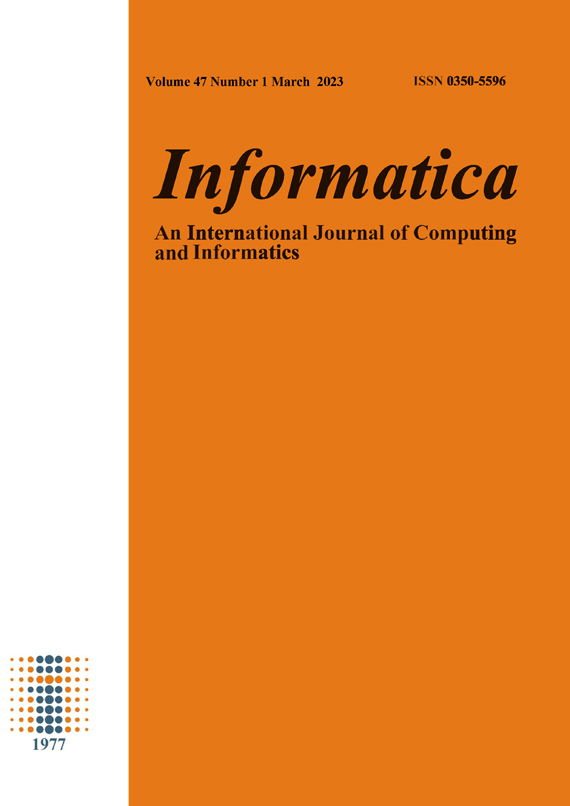Prediction of Heart Disease Using Modified Hybrid Classifier
DOI:
https://doi.org/10.31449/inf.v47i1.3629Abstract
Cardiovascular diseases leading to heart attack kills nearly 17.9 million humans. The complexity of this disease’s lies in the fact that it suddenly fails the functioning of human and then SOP (Standard Operating Plan) is required; if not provided on time, patients’ life is in danger. Proper health care system takes time to detect the cause and effectively start the diagnosis whereas our proposed system efficiently and accurately tells the client weather he has a heart disease or not and also tells whether the patient will face such kind of disease in near future or not. The system is developed based on machine learning techniques such as Naive Bayes, XGBoost gradient classifier, decision tree and support vector machine (SVM). We have also selected some external factors which may lead to heart disease in future. Furthermore, integrated Web application has been developed which alert and gives a user-friendly interface for the recognition and prediction. We have analyzed 13 diagnostic factors and 5 environmental factors. Stalogand Cleveland dataset are combinedly used in this article. This suggested diagnosis system achieved a good accuracy as compared to previous methods proposed earlier. In addition to that this system can easily be implemented in public domain to spread awareness regarding heart disease and also the possibility of the heart disease in near future can be identified.
References
Medline plus: heart diseases, 2021. http://www.nlm.nih.gov/medlineplus/heartdiseases.html (Accessed on April 22, 2021)
P. Puska, S. Mendis, B. Norrving, W. H. Organization. 2011. Global atlas on cardiovascular disease prevention and control. Geneva: World Health Organization, 2011.
A. Tsanas, M. A. Little, P. E. McSharry, and L. O. Ramig. 2011. Nonlinear speech analysis algorithms mapped to a standard metric achieve clinically useful quatacaine of average Parkinson's disease symptom severity, J. Roy. Soc. Interface, vol. 8 (59): 842-855.
R.Detrano, A.Janosi, W.Steinbrunn, M.Pfisterer, J.-J.Schmid, S.Sandhu, K.H.Guppy, S. Lee, and V.Froelicher. 1989. ‘International application of a new probability algorithm for the diagnosis of coronary artery disease, Amer. J. Cardiol., 64 (5): 304–310.
J. H. Gennari, P. Langley, and D. Fisher. 1989.Models of incremental concept formation, Artif. Intell., 40(1–3): 11–61.
Y. Li, T. Li, and H. Liu. 2017. Recent advances in feature selection and its applications, Knowl. Inf. Syst., 53(3): 551–577.
J. Li and H. Liu. 2017. Challenges of feature selection for big data analytics, 32(2): 9-15.
Z. XU and H. HU. 2010. Projection Models for Intuitionistic Fuzzy Multiple Attribute Decision Making, IEEE Intell. Syst., 32(2): 9–15.
L. Zhu, J. Shen, L. Xie, and Z. Cheng. 2017. Unsupervised topic hyper graph hashing for efficient mobile image retrieval, IEEE Trans. Cybern., 47(11): 3941–3954.
S. Raschka. 2018. Model evaluation, model selection, and algorithm selec- tion in machine learning, arXiv:1811.12808. [Online]. Available: http://arxiv.org/abs/1811.12808
S. Palaniappan and R. Awang. 2008. Intelligent heart disease prediction system using data mining techniques, in Proc. IEEE/ACS Int. Conf. Comput. Syst. 108–115.
E. O. Olaniyi, O. K. Oyedotun, and K. Adnan. 2015. Heart diseases diagnosis using neural networks arbitration, Int. J. Intell. Syst. Appl., 7(12): 72.
R. Das, I. Turkoglu, and A. Sengur. 2009. Effective diagnosis of heart disease through neural networks ensembles, Expert Syst. Appl., 36(4): 7675–7680.
O. W. Samuel, G. M. Asogbon, A. K. Sangaiah, P. Fang, and G. Li. 2017. An integrated decision support system based on ANN and Fuzzy_AHP for heart failure risk prediction, Expert Syst. Appl., 68: 163–172.
A. V. S. Kumar. 2012. Diagnosis of heart disease using fuzzy resolution mech- anism, J. Artif. Intell., 5(1): 47–55.
Downloads
Published
Issue
Section
License
I assign to Informatica, An International Journal of Computing and Informatics ("Journal") the copyright in the manuscript identified above and any additional material (figures, tables, illustrations, software or other information intended for publication) submitted as part of or as a supplement to the manuscript ("Paper") in all forms and media throughout the world, in all languages, for the full term of copyright, effective when and if the article is accepted for publication. This transfer includes the right to reproduce and/or to distribute the Paper to other journals or digital libraries in electronic and online forms and systems.
I understand that I retain the rights to use the pre-prints, off-prints, accepted manuscript and published journal Paper for personal use, scholarly purposes and internal institutional use.
In certain cases, I can ask for retaining the publishing rights of the Paper. The Journal can permit or deny the request for publishing rights, to which I fully agree.
I declare that the submitted Paper is original, has been written by the stated authors and has not been published elsewhere nor is currently being considered for publication by any other journal and will not be submitted for such review while under review by this Journal. The Paper contains no material that violates proprietary rights of any other person or entity. I have obtained written permission from copyright owners for any excerpts from copyrighted works that are included and have credited the sources in my article. I have informed the co-author(s) of the terms of this publishing agreement.
Copyright © Slovenian Society Informatika








